“Suspended in the timelessness of inner space are the thoughtwaves of my first impressions. They will be our only source of contact once you have passed beyond the limits of normal MAG-NI-FI-CA-TION!”
Park Lore was established to preserve the timeless tales of lost masterpiece rides for future generations. We’ve explored fan-favorites like 20,000 Leagues Under the Sea, Alien Encounter, Mr. Toad’s Wild Ride, TOMB RAIDER: The Ride, The Peoplemover, Soarin’ Over California, and so many more. All along we’ve asked for your comments and memories to help us save these attractions forever and explore their in-depth stories.
Now, we turn to a Tomorrowland favorite, and an almost-unbelievable journey down to the size of an atom. A classic dark ride that kick-started the intellectual wonder of a generation, Adventure Thru Inner Space was an early precursor to the optimistic, inspirational, enigmatic dark rides that populated EPCOT Center when it opened. This once-headlining dark ride debuted brand new technologies still in use today, and is still remembered as an icon of Disneyland’s most well-loved era: Tomorrowland 1967.
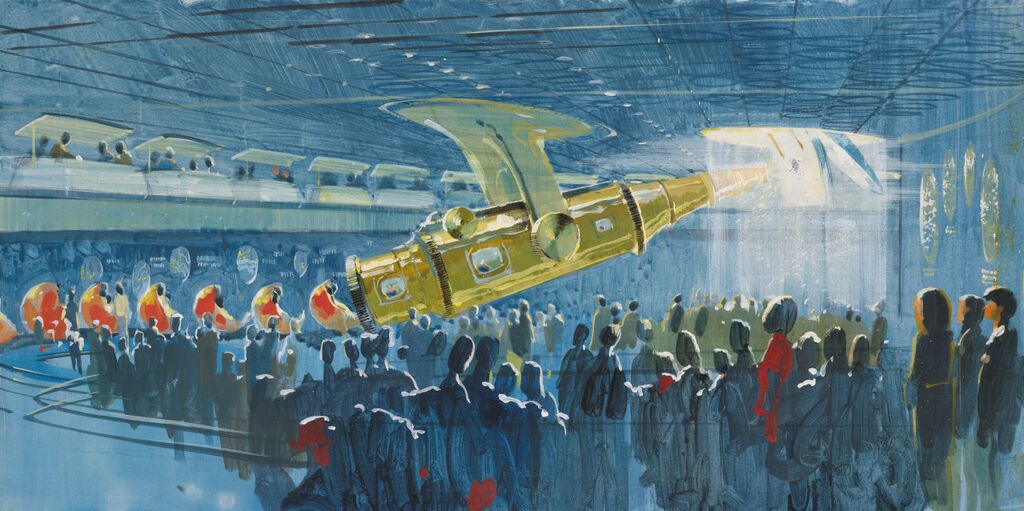
A stunning journey into the retro-wonders of atomic energy and structure, this educational dark ride left riders speechless. So what did guests find in the magnificent reaches of the microscopic world? We’re about to find out. Prepare for magnification!
And before we head off, remember that you can unlock rare concept art and audio streams in this story, access over 100 Extra Features, and recieve an annual Membership card and postcard art set in the mail by supporting this clickbait-free, in-depth, ad-free theme park storytelling site for as little as $2 / month! Become a Park Lore Member to join the story! Until then, let’s start at the beginning…
Old Tomorrowland (1955 – 1959)
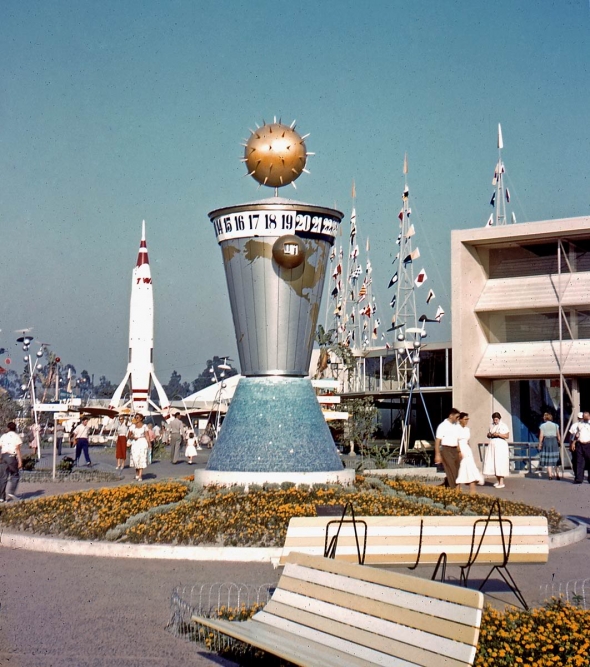
So many of our Lost Legends entries begin here, in the Tomorrowland guests encountered when Disneyland first opened in 1955. There’s a good reason that the stories of so many classics are rooted in this land at this time: because it was a rare disappointment.
Like Walt himself, so many of Disney’s fans look to the past as an idealized, romantic time when things were the way they ought to have stayed. Very few people would say, though, that Tomorrowland was ready to be one of Disneyland’s anchor areas in 1955.
In fact, that Tomorrowland was so far behind schedule during the park’s construction, Walt allegedly ordered that construction on the east side of the park stop entirely. He intended to divert funds from what would be Tomorrowland to the park’s other themed realms. Once Disneyland was on its way, he could reinvest in a Phase II that would open an impressive Tomorrowland more along the lines of the grand display of futurism he envisioned.
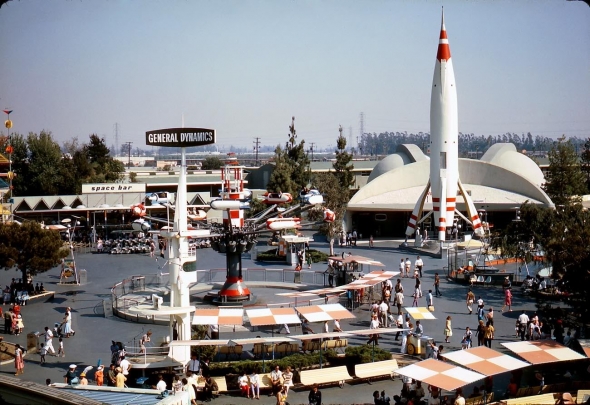
But apparently, in the autumn before the park’s summer opening, he relented. Walt announced that construction should go ahead on Tomorrowland and that, despite his hopes, the land would simply be a corporate showcase; a “World’s Fair” where American companies could display their innovations and peddle their products to the growing middle class.
This Tomorrowland featured such riveting displays as the Kaiser Aluminum Hall of Fame, the Crane Bathroom of Tomorrow, and the Dutch Boy Paint Color Gallery. One of Disney’s few holdouts in the land was a walkthrough display re-using the sets from 1954’s 20,000 Leagues Under the Sea.
Monsanto’s miracle (1957)
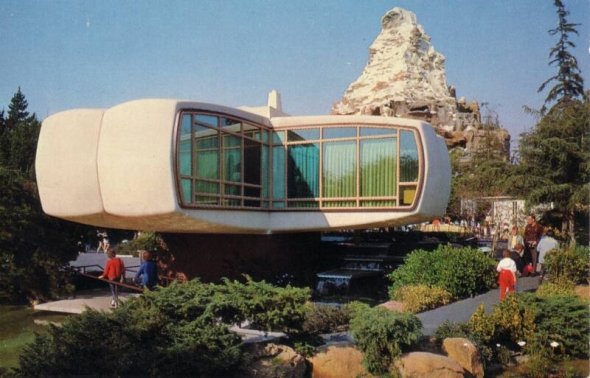
One of the most memorable, though, was the Monsanto House of the Future, which opened in 1957. The strange, cantilevered, white plastic house built just off the park’s Hub was a veritable icon of Tomorrowland at the time, and a coup for the Monsanto Company.
After all, guests who passed through the home of the future got the chance to view ultra-modern furniture comprised entirely of synthetic materials thanks to Monsanto’s groundbreaking efforts, or the inconceivable flat TV suspended right on the wall of the living room!
The most astounding encounter, though, had to be inside the “Atoms for Living” kitchen, featuring a microwave oven. Sincerely the stuff of scientific progress, the countertop microwave oven wouldn’t be commercially available for a full decade, leaving audiences of the 1950s stunned.
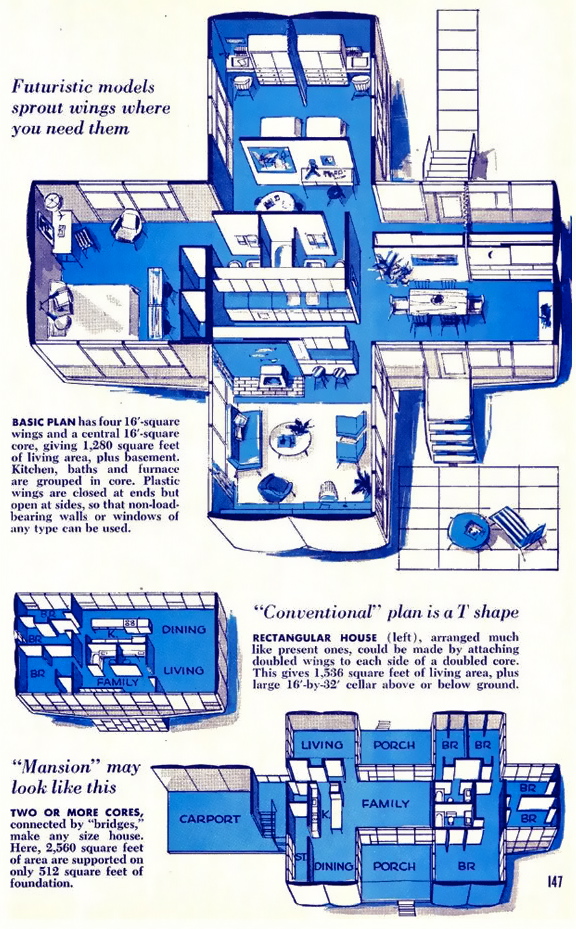
If you asked Imagineers in 1955, they’d tell you that this Tomorrowland and the Monsanto House of the Future were meant to predict the year 1986 – immeasurably far away. (Consider, for example, if today’s Tomorrowland tried to accurately, scientifically predict how the world would look in 2047.) While it might’ve emulated a future as seen from the 1950s, its soaring rocket ships, waving flags, and squared architecture at least gave visitors a sense of what would become Tomorrowland’s core concepts.
Innovating and adding (1959 – 1966)
Still, Walt was never content with this half-hearted display of corporate power and assured his designers that Tomorrowland was not yet complete. His dedication for the land signaled his vision; he called for the land to be “a vista into a world of wondrous ideas, signifying Man’s achievements… A step into the future, with predictions of constructed things to come. Tomorrow offers new frontiers in science, adventure and ideals. The Atomic Age, the challenge of Outer Space and the hope for a peaceful, unified world.”
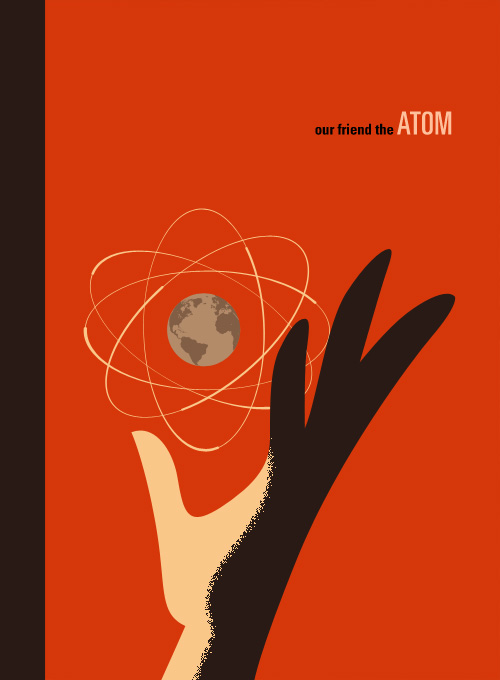
Particularly, it was dreams of an Atomic Age and a Space Age that drove Walt’s narrative. An episode of the Disneyland television series hosted by Walt entitled “Our Friend the Atom” aired on January 23, 1957. Nuclear power was the way of the future, and an emerging area of interest with the public. Fittingly, Walt had a plan: “We made plans to build an exhibit at Disneyland to show you atomic energy in action.”
However, the plans to add an atomic attraction to Disneyland were moved to Imagineering’s backburner due, in large part, to a much larger and more pressing expansion meant to bring Tomorrowland up to snuff.
In 1959, the park ceremoniously opened three brand new rides: the Matterhorn Bobsleds (the first tubular steel tracked roller coaster), the Submarine Voyage (the world’s largest peacetime submarine fleet), and the Disney-ALWEG Monorail (the first daily-operating monorail system in the Western hemisphere). So grand were these new and groundbreaking rides, they each earned a new designation, requiring the most expensive and limited ride ticket: an E-Ticket.
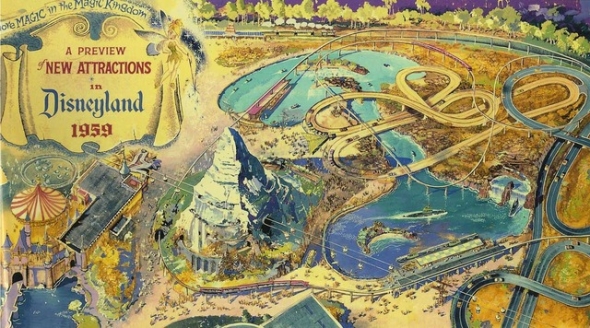
So just four years after the park opened, Tomorrowland had doubled in size and scope and was well on its way to being the Tomorrowland Walt always hoped for.
As the Cold War continued and the Cuban Missile Crisis loomed, the role of atomic power grew and an educational exhibit at Disneyland seemed all the more pressing. Unfortunately, Walt and company were focused elsewhere: the 1964-65 World’s Fair. Designers were working overtime to prepare for the Fair, where Disney had been contracted to provide no less than four headlining attractions for major corporations. Those four attractions would evolve into Great Moments with Mr. Lincoln, “it’s a small world,” Carousel of Progress, and the Peoplemover.
And as the Fair closed in 1965, designers were buoyed by the tremendous innovation they’d used to bring those four attractions to life. So impressive were their newest technologies, they warranted a place in Tomorrowland back at Disneyland.
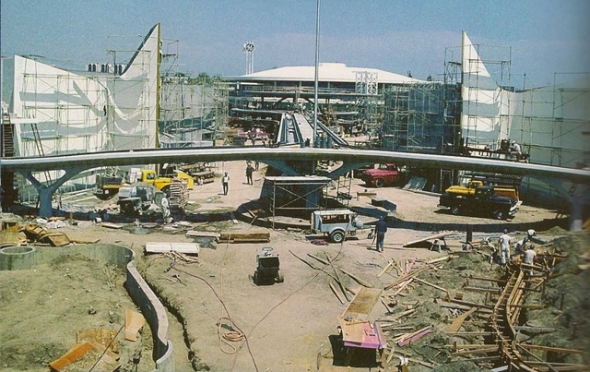
But even a decade after the park opened, Tomorrowland was faltering. The sincere attempt at forecasting the future from 1955 had been inspiring, but it couldn’t hold up. None of the corporate showcases left in Tomorrowland felt convincingly futuristic by the mid-60s. Microwave ovens were the stuff of science fact, not of futurism, and their place in the Monsanto House of the Future was an eye-rolling reminder of a different time. So if Imagineers wanted Tomorrowland to sincerely represent cutting-edge technologies, everything except the 1959 expansion would need a floor-to-ceiling rebuild from scratch.
A great, big, beautiful Tomorrowland was on the way… Read on…



I really liked the conclusion to this story! It was very well written.